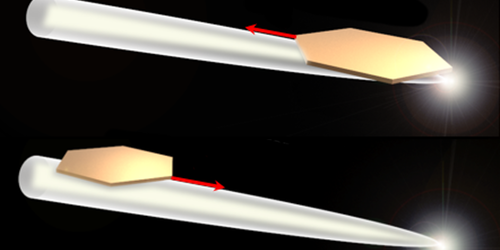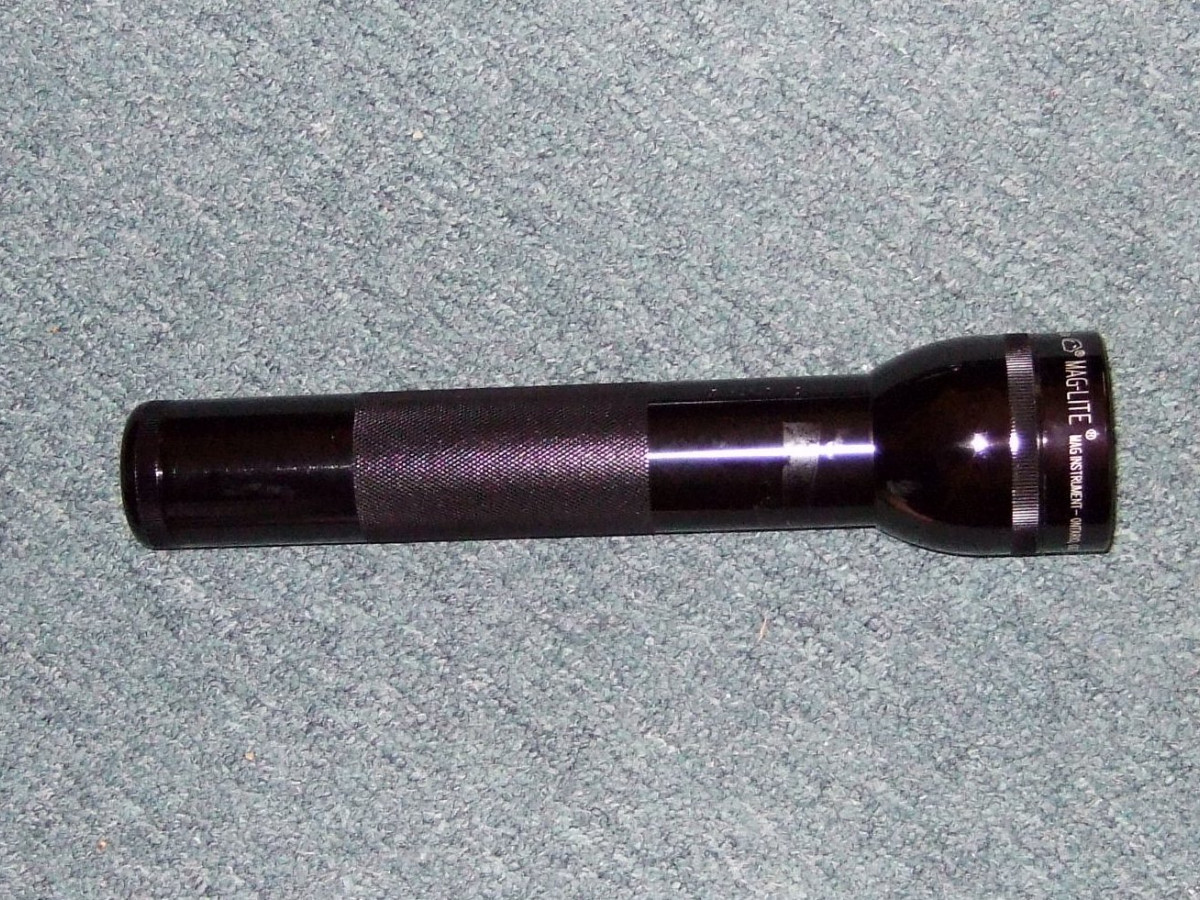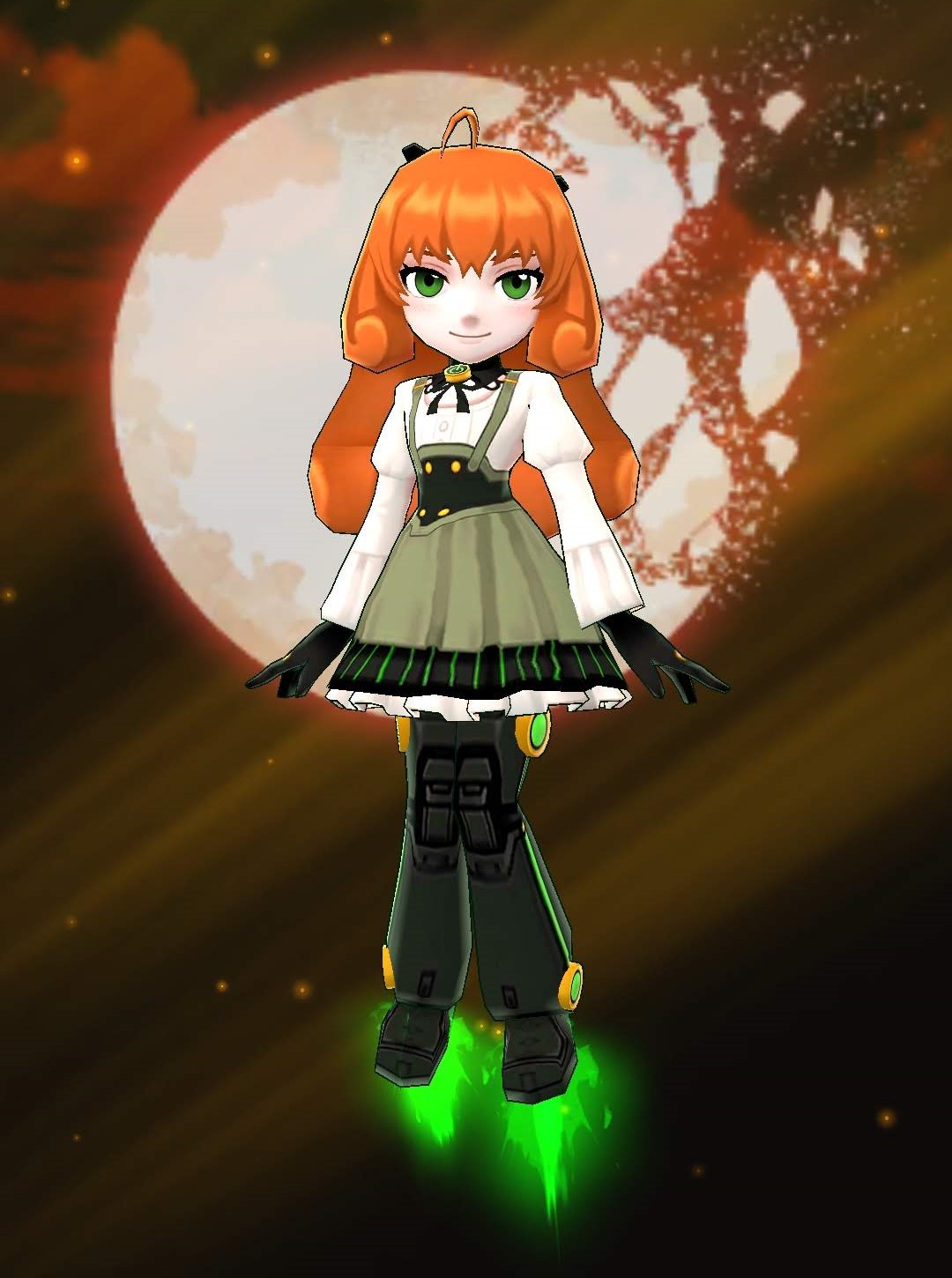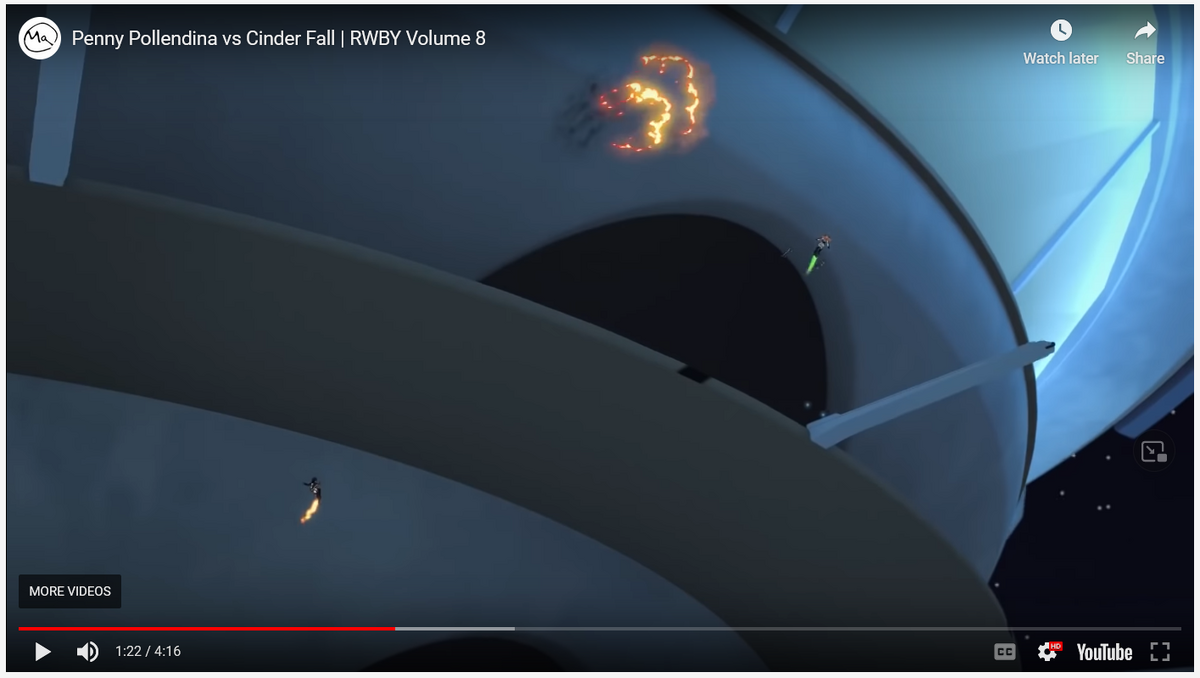- 1,858
- 1,417
For the past week, members and I have been discussing the possibility of using Penny's blasters and Ironwood's cannon as sources of lasers, thereby upgrading RWBY to relativistic speeds to even FTL. However, I understand that lightspeed RWBY is a contentious matter, so I will do my best to both defend this stance and prove its legitimacy.
First, I would like to remind you all of VS Battle Wiki's new standards for laser feats. The presence of force is no longer an invalidating factor for lasers. The list of disqualifying factors goes as thus:
While the absence of these factors does not constitute a laser being lightspeed, it does strengthen its argument for it. With this being said, I will now go into the source material to showcase evidence of lightspeed factors, as well as supplementary materials to increase my logos.
The first character we will analyze will be Penny Polendenia. She is an android built in the City of Atlas, noted for being the most advanced human settlement on Remnant. She utilizes a weapon called Floating Array, a collection of floating short swords she controls with a closed network. A notable feature of Floating Array is that it can shoot off green energy beams, or, as this post will prove, lasers.
(39:31 to 39:40)
As we can see, they fly straight, cut objects clean through, and intensely heat surfaces. However, some of you might state that Penny's lasers show an intense amount of force. That is true. However, as described before, force is no longer a disqualifying factor for VS Wiki. However, to those who still may have issues with it, I point to this article.

 physics.aps.org
physics.aps.org
"Light carries momentum that can push on an object, but it can also move an object through thermal forces. A new experiment combines both of these effects to manipulate a tiny gold plate that can slide along a tapered optical fiber. The momentum-transfer and thermal forces act in opposite directions, allowing the plate to be driven first one way and then the other."
This article, which was published in a peer-reviewed physics journal, states that light, while not having mass, does have momentum, thus having force.
However, some may state the force produced in the experiment used in the article was minuscule and would not scale to real life. For this accusation, I present this interview with Dr. Anna Lombardi, a professor at the University of Cambridge.

 www.thenakedscientists.com
www.thenakedscientists.com
Kerstin - The theory tell us that light does have a little bit of a push but I certainly cannot feel it when I switch on my torch. What's the point of all the theory then?
Anna - While the push of light is so tiny that you don't feel it in everyday life, we can observe it at the nanoscale in the world of the infinitely small. Arthur Ashkin, a scientist working at the Bell Labs in the seventies demonstrated that nanometer and micron sized particles can be accelerated, trapped and manipulated by radiation pressure of a highly focused laser beam.
Nowadays, scientists use light quite literally like optical tweezers to manipulate objects from cells to single atoms
Kirsten - Does that mean that we just need a superpower torch to move the big stuff?
Anna - If as a light source we don't limit ourselves to a simple torch, but we consider the Sun, then the radiation pressure exerted is strong enough to push spacecrafts and even asteroids from their path.
With this statement, we can see that sufficient radiation pressure in space can push large and heavy objects such spacecraft and even asteroids out from their path. Thus, this proves that ,with a strong enough light source, massive objects can be forced back. Before this, Professor Lombardi states:
Anna - The higher the frequency of the light, the larger its momentum and, therefore, a stronger force it can exert. This means that blue light will push you stronger than red light.
Thus, the argument can be made that Penny's beams are simply firing off the lasers at a very intense frequency that allows her to "push" objects away with them.
But perhaps the most damning piece of evidence that Penny's beams are lasers is the fact that Amity Arena, an official RWBY mobile game calls them thus in it's description for the Penny 2.0 card.

 amityarena.fandom.com
(Right below the passive skill line)
amityarena.fandom.com
(Right below the passive skill line)
Some may claim that since this is just a mobile game, it does not have the same ethos as would the main source material in terms of accurately describing characters and abilities. However, I'll point to this tweet made by the Amity Arena twitter account:
Here, they state that the descriptions they put in the game are canon and that RT approves of each and every one of them. Some might point to the "most" word in their statement to cast don't on the validity of the canon descriptions, but that word most likely refers to the inclusion of Chibi stuff, which is a non-canon spin-off of RWBY.
Furthermore, the actual game exists inside of the RWBY universe, which each description being written by an Atlas Scientist, as seen with these two articles from the RWBY wiki:

 amityarena.fandom.com
amityarena.fandom.com
"Human Nextwork is a game development company that exists in the world of RWBY. It is the company that develops RWBY: Amity Arena."
"With the exception of references to RWBY Chibi, the information provided in Amity Arena's card bios is canon to the RWBY universe.[9]"

 amityarena.fandom.com
amityarena.fandom.com
"The game took place in-universe. Many card bios were written by an Atlesian scientist, and the game itself was developed in Atlas by the in-universe company Human Nextwork.[4]"
Thus, not only do we have out-of-game confirmation that what the descriptions are saying is canon, but also that in-universe confirmation that what is written is true, especially in regards to Penny and her lasers. An Attlesian scientist would most likely be very familiar with Penny's tech and also know full well what a laser would be.
Lastly, in regards to Atlas tech, in RWBY: The Grimm Campaign, a DnD spin-off show who's DM Eddy Rivas, a writer for the show and appointed "lore master" of RWBY, there are cloaking devices introduced in the campaign called invisibility cloaks.

 rwby.fandom.com
rwby.fandom.com
This shows that Atlas scientists have knowledge on how photons work and how to construct devices that bend the light around the user to render them invisible. Thus, they would know what a laser is.
All of this evidence culminates in Penny's lasers fulfilling one of the key components on what makes a laser lightspeed, which is thus:
The next lightspeed source I would like to prove is Ironwood's cannon that he used at the end of volume 8. Here are some examples of him using it.
(At the 1:08 mark)
https://www.youtube.com/watch?v=045_uTG0JrE
As we see here, Ironwood's cannon shares similarities to Penny's lasers. It fires in a straight light and it shows an incredible amount of heat (as seen with the flames). However, some may claim that, since Ironwood's cannons show a great explosive force, they do not qualify as real lasers. However, according to VS wiki rules, the presence of explosive force in a beam-like projectile is not a disqualifier for lightspeed lasers. To refute this point anyway, I point to this forum post on physicsforums.com, a site where STEM majors gather together and discuss science. They can also post questions in forums, which are answered by vetted professionals in the field.

 www.physicsforums.com
www.physicsforums.com
Question: "Please read this carefully before answering,in fiction lasers are quite common and they seem to have the property to produce explosions.I am not asking if they exist,I am asking if with the right technology can laser beams produce explosions.Is this just some myth or is there some truth to photons being able to produce explosions?"
Answer 1: "Absolutely. If you suddenly overheat a small area, it will explode. You'd need an extremely powerful laser, but if you are using it as a weapon, it'd have to be that powerful. It'd probably be pretty different than you see in the sci-fi movies, but the concept itself is solid."
Answer 2: "IIRC an area of research in laser weaponry is looking into creating lasers that ablate a layer on the surface of the target creating a plasma that expands rapidly; essentially creating an explosion. I think it's called pulsed laser projectile or something like that."
Thus, with the backing of two vetted professionals, we can see that it is possible for lasers to produce explosions.
Now, one of the reasons why Ironwood's canon can be considered a laser is because it fulfills one of VS Battle Wiki's tenets for being a lightspeed laser, namely thus:
 www.youtube.com
(From 2:00 to 2:20)
www.youtube.com
(From 2:00 to 2:20)
Thus, with this show, we can easily state that Winter's ice shield is made of natural materials. Furthermore, in another post on physicforum.com, a user posted this question:

 www.physicsforums.com
www.physicsforums.com
Question: Hi, So I've just been learning about albedo as part of my course and the question that strikes me is: What is it about the structure of ice, particularly at the surface, that causes so much more light to reflect than with water?
To which, the response was:
Answer: Welcome to PF. Ice is solid water. Ice is flat, water has waves. Snow flakes scatter light, but ice can be clear, for example ice on a pond or black ice. Some icebergs show up on radar, some are invisible. Metal surfaces make good mirrors. Light is reflected from changes in conductivity or dielectric constant. Liquid water has a very high dielectric constant at about 80, compared with most materials being between 2 and 5. Water should reflect better than ice. Solid water ice does not have a high dielectric constant.
Thus, this shows that, while water might reflect better than ice, ice can still reflect light. Thus, the fact that Ironwood's laser bounces off the ice shield and back at him proves that Ironwood's laser has light properties to it.
For further evidence that Ironwood's cannon is a laser, we must ironically show that it does not produce a major opposing force, AKA recoil, on the user. If one will look back on the two clips of Ironwood firing his cannon, one will see that in the first clip at the 1:08 and in the second clip at the 1:19 and 2:17 mark, that not once does Ironwood show any major recoil after he fires this weapon. Furthermore, in a Death Battle podcase with Kdin Jenzin, an RT staff member who works very closely with the writing crew of RWBY, she makes a claim at 23:46 that Ironwood's weapon was made specifically to kill a Maiden Penny.
 www.youtube.com
www.youtube.com
Thus, the cannon must literally be one of the most powerful weapons that the Atlas Military has and, in turn produce a lot of force if it uses anything but a laser. However, as stated above, it does not show any recoil. Thus, in conjunction with the deflection above, we can state that Ironwood's cannon must be firing some kind of laser. As stated before, Atlas scientists must be aware of what a laser is when they described Penny's weapons as such in the Amity Arena bio. So, it is not too much of a stretch to state that they would also supply their general with one too.
Thus, with all this evidence in mind, we can state that both Penny's and Ironwood's weapons fire lasers and are thus lightspeed. So, what does this mean for the overall RWBYverse in terms of speed scaling. Well, lucky for me WeeklyBattles already did preliminary calculations for both laser dodges and interceptions, as you can see here:

 vsbattles.fandom.com
vsbattles.fandom.com
The major takeaways are that Cinder can dodge lasers while Winter can block and deflect them. Furthermore, although this has not been calced here yet, Pyrrha in Volume 3 is shown dodging lasers as well.
 www.youtube.com
(1:20 to 1:36)
www.youtube.com
(1:20 to 1:36)
How this can apply to RWBY characters we can discuss in the thread below. But, from my standpoint, Salem and maidens such as Cinder, Winter, Raven, and Penny etc should scale to each other evenly in terms of speed in regards to Weeklys calcs, as they have fought each other multiple times. There is also an argument that non-maidens can scale to them as well, as Team RWBY and the Ace-Ops have fought against maidens. In fact, in Volume 3, Mercury, Emerald, and a non-maiden Cinder were able to defeat the fall maiden Amber, showing that maidens can be taken down by normal opponents. In addition, I think everyone post volume 3 should scale to Pyrrha's dodging feat, as most have gotten strong enough to be on her level or surpass it.
I know that this is a major speed change for RWBY and some may still be skeptical, but I thank you all for your time and for reading this very long post. I tried to cover as many bases as I could, yet I am sure I still missed something. Thank you again.
First, I would like to remind you all of VS Battle Wiki's new standards for laser feats. The presence of force is no longer an invalidating factor for lasers. The list of disqualifying factors goes as thus:
- It is shown at different speeds in the same material.
- It is tangible and can be interacted with physically by normal humans.
- They do not travel in straight lines (unless you can prove refraction/reflection, see above.)
While the absence of these factors does not constitute a laser being lightspeed, it does strengthen its argument for it. With this being said, I will now go into the source material to showcase evidence of lightspeed factors, as well as supplementary materials to increase my logos.
The first character we will analyze will be Penny Polendenia. She is an android built in the City of Atlas, noted for being the most advanced human settlement on Remnant. She utilizes a weapon called Floating Array, a collection of floating short swords she controls with a closed network. A notable feature of Floating Array is that it can shoot off green energy beams, or, as this post will prove, lasers.
(39:31 to 39:40)
As we can see, they fly straight, cut objects clean through, and intensely heat surfaces. However, some of you might state that Penny's lasers show an intense amount of force. That is true. However, as described before, force is no longer a disqualifying factor for VS Wiki. However, to those who still may have issues with it, I point to this article.

Light Pushes and Pulls
Two forces coming from a light beam—one based on momentum transfer, the other on thermal effects—drive a tiny gold plate to move in opposite directions.
"Light carries momentum that can push on an object, but it can also move an object through thermal forces. A new experiment combines both of these effects to manipulate a tiny gold plate that can slide along a tapered optical fiber. The momentum-transfer and thermal forces act in opposite directions, allowing the plate to be driven first one way and then the other."
This article, which was published in a peer-reviewed physics journal, states that light, while not having mass, does have momentum, thus having force.
However, some may state the force produced in the experiment used in the article was minuscule and would not scale to real life. For this accusation, I present this interview with Dr. Anna Lombardi, a professor at the University of Cambridge.

Can light exert a force to move an object?
Why don't you get thrown backwards when you switch on your torch? Kerstin Göpfrich found out from Dr Anna Lombardi.
Kerstin - The theory tell us that light does have a little bit of a push but I certainly cannot feel it when I switch on my torch. What's the point of all the theory then?
Anna - While the push of light is so tiny that you don't feel it in everyday life, we can observe it at the nanoscale in the world of the infinitely small. Arthur Ashkin, a scientist working at the Bell Labs in the seventies demonstrated that nanometer and micron sized particles can be accelerated, trapped and manipulated by radiation pressure of a highly focused laser beam.
Nowadays, scientists use light quite literally like optical tweezers to manipulate objects from cells to single atoms
Kirsten - Does that mean that we just need a superpower torch to move the big stuff?
Anna - If as a light source we don't limit ourselves to a simple torch, but we consider the Sun, then the radiation pressure exerted is strong enough to push spacecrafts and even asteroids from their path.
With this statement, we can see that sufficient radiation pressure in space can push large and heavy objects such spacecraft and even asteroids out from their path. Thus, this proves that ,with a strong enough light source, massive objects can be forced back. Before this, Professor Lombardi states:
Anna - The higher the frequency of the light, the larger its momentum and, therefore, a stronger force it can exert. This means that blue light will push you stronger than red light.
Thus, the argument can be made that Penny's beams are simply firing off the lasers at a very intense frequency that allows her to "push" objects away with them.
But perhaps the most damning piece of evidence that Penny's beams are lasers is the fact that Amity Arena, an official RWBY mobile game calls them thus in it's description for the Penny 2.0 card.

Penny 2.0
Penny Polendina[1] I'm combat ready! Penny 2.0 is a 5-aura unit in RWBY: Amity Arena. Unlocked at Vale City Square, Penny 2.0 is a ranged air unit that amplifies damage to its target over time. [2] Ranged air unit that amplifies damage to its target over time. In the match on Amity Arena in the...
Some may claim that since this is just a mobile game, it does not have the same ethos as would the main source material in terms of accurately describing characters and abilities. However, I'll point to this tweet made by the Amity Arena twitter account:
Here, they state that the descriptions they put in the game are canon and that RT approves of each and every one of them. Some might point to the "most" word in their statement to cast don't on the validity of the canon descriptions, but that word most likely refers to the inclusion of Chibi stuff, which is a non-canon spin-off of RWBY.
Furthermore, the actual game exists inside of the RWBY universe, which each description being written by an Atlas Scientist, as seen with these two articles from the RWBY wiki:

Human Nextwork
Human Nextwork is a game development company that exists in the world of RWBY. It is the company that develops RWBY: Amity Arena. Before joining Human Nextwork, an unknown developer worked alongside Arthur Watts and Pietro Polendina on a project assigned by James Ironwood for future Atlesian...
"Human Nextwork is a game development company that exists in the world of RWBY. It is the company that develops RWBY: Amity Arena."
"With the exception of references to RWBY Chibi, the information provided in Amity Arena's card bios is canon to the RWBY universe.[9]"

RWBY: Amity Arena
RWBY: Amity Arena was a real-time strategic duel mobile game developed by NHN Entertainment and published by Rooster Teeth Productions based on Rooster Teeth's anime-style web series RWBY. The game was announced by Rooster Teeth on April 25, 2018.[3] It was released for Android devices worldwide...
"The game took place in-universe. Many card bios were written by an Atlesian scientist, and the game itself was developed in Atlas by the in-universe company Human Nextwork.[4]"
Thus, not only do we have out-of-game confirmation that what the descriptions are saying is canon, but also that in-universe confirmation that what is written is true, especially in regards to Penny and her lasers. An Attlesian scientist would most likely be very familiar with Penny's tech and also know full well what a laser would be.
Lastly, in regards to Atlas tech, in RWBY: The Grimm Campaign, a DnD spin-off show who's DM Eddy Rivas, a writer for the show and appointed "lore master" of RWBY, there are cloaking devices introduced in the campaign called invisibility cloaks.

Invisibility Cloak
Invisibility Cloaks are a piece of Technology devised by Atlesian scientists. They are fabrics used to create garments which render whomever or whatever it covers invisible. They were used by Spider and its criminal network in Mistral. The fabrics were developed in Atlas for an unknown purpose...
This shows that Atlas scientists have knowledge on how photons work and how to construct devices that bend the light around the user to render them invisible. Thus, they would know what a laser is.
All of this evidence culminates in Penny's lasers fulfilling one of the key components on what makes a laser lightspeed, which is thus:
- The beam is called lightspeed by reliable sources.
The next lightspeed source I would like to prove is Ironwood's cannon that he used at the end of volume 8. Here are some examples of him using it.
(At the 1:08 mark)
https://www.youtube.com/watch?v=045_uTG0JrE
As we see here, Ironwood's cannon shares similarities to Penny's lasers. It fires in a straight light and it shows an incredible amount of heat (as seen with the flames). However, some may claim that, since Ironwood's cannons show a great explosive force, they do not qualify as real lasers. However, according to VS wiki rules, the presence of explosive force in a beam-like projectile is not a disqualifier for lightspeed lasers. To refute this point anyway, I point to this forum post on physicsforums.com, a site where STEM majors gather together and discuss science. They can also post questions in forums, which are answered by vetted professionals in the field.

Are lasers capable of producing explosions ,or is that just fictional filler?
Please read this carefully before answering,in fiction lasers are quite common and they seem to have the property to produce explosions.I am not asking if they exist,I am asking if with the right technology can laser beams produce explosions.Is this just some myth or is there some truth to...
Question: "Please read this carefully before answering,in fiction lasers are quite common and they seem to have the property to produce explosions.I am not asking if they exist,I am asking if with the right technology can laser beams produce explosions.Is this just some myth or is there some truth to photons being able to produce explosions?"
Answer 1: "Absolutely. If you suddenly overheat a small area, it will explode. You'd need an extremely powerful laser, but if you are using it as a weapon, it'd have to be that powerful. It'd probably be pretty different than you see in the sci-fi movies, but the concept itself is solid."
Answer 2: "IIRC an area of research in laser weaponry is looking into creating lasers that ablate a layer on the surface of the target creating a plasma that expands rapidly; essentially creating an explosion. I think it's called pulsed laser projectile or something like that."
Thus, with the backing of two vetted professionals, we can see that it is possible for lasers to produce explosions.
Now, one of the reasons why Ironwood's canon can be considered a laser is because it fulfills one of VS Battle Wiki's tenets for being a lightspeed laser, namely thus:
- The beam refracts in a new material, such as a liquid or...
- The beam diffuses in a reasonably realistic way or reflects off a material that it can be expected to, such as a non-magical mirror.
- YouTube
Enjoy the videos and music you love, upload original content, and share it all with friends, family, and the world on YouTube.
Thus, with this show, we can easily state that Winter's ice shield is made of natural materials. Furthermore, in another post on physicforum.com, a user posted this question:

What is it about ice that makes it so reflective?
Hi, So I've just been learning about albedo as part of my course and the question that strikes me is: What is it about the structure of ice, particularly at the surface, that causes so much more light to reflect than with water? The differences I can see are: * Ice is less dense than water and...
Question: Hi, So I've just been learning about albedo as part of my course and the question that strikes me is: What is it about the structure of ice, particularly at the surface, that causes so much more light to reflect than with water?
To which, the response was:
Answer: Welcome to PF. Ice is solid water. Ice is flat, water has waves. Snow flakes scatter light, but ice can be clear, for example ice on a pond or black ice. Some icebergs show up on radar, some are invisible. Metal surfaces make good mirrors. Light is reflected from changes in conductivity or dielectric constant. Liquid water has a very high dielectric constant at about 80, compared with most materials being between 2 and 5. Water should reflect better than ice. Solid water ice does not have a high dielectric constant.
Thus, this shows that, while water might reflect better than ice, ice can still reflect light. Thus, the fact that Ironwood's laser bounces off the ice shield and back at him proves that Ironwood's laser has light properties to it.
For further evidence that Ironwood's cannon is a laser, we must ironically show that it does not produce a major opposing force, AKA recoil, on the user. If one will look back on the two clips of Ironwood firing his cannon, one will see that in the first clip at the 1:08 and in the second clip at the 1:19 and 2:17 mark, that not once does Ironwood show any major recoil after he fires this weapon. Furthermore, in a Death Battle podcase with Kdin Jenzin, an RT staff member who works very closely with the writing crew of RWBY, she makes a claim at 23:46 that Ironwood's weapon was made specifically to kill a Maiden Penny.
- YouTube
Enjoy the videos and music you love, upload original content, and share it all with friends, family, and the world on YouTube.
Thus, the cannon must literally be one of the most powerful weapons that the Atlas Military has and, in turn produce a lot of force if it uses anything but a laser. However, as stated above, it does not show any recoil. Thus, in conjunction with the deflection above, we can state that Ironwood's cannon must be firing some kind of laser. As stated before, Atlas scientists must be aware of what a laser is when they described Penny's weapons as such in the Amity Arena bio. So, it is not too much of a stretch to state that they would also supply their general with one too.
Thus, with all this evidence in mind, we can state that both Penny's and Ironwood's weapons fire lasers and are thus lightspeed. So, what does this mean for the overall RWBYverse in terms of speed scaling. Well, lucky for me WeeklyBattles already did preliminary calculations for both laser dodges and interceptions, as you can see here:

RWBY: Laser Feats
The major takeaways are that Cinder can dodge lasers while Winter can block and deflect them. Furthermore, although this has not been calced here yet, Pyrrha in Volume 3 is shown dodging lasers as well.
- YouTube
Enjoy the videos and music you love, upload original content, and share it all with friends, family, and the world on YouTube.
How this can apply to RWBY characters we can discuss in the thread below. But, from my standpoint, Salem and maidens such as Cinder, Winter, Raven, and Penny etc should scale to each other evenly in terms of speed in regards to Weeklys calcs, as they have fought each other multiple times. There is also an argument that non-maidens can scale to them as well, as Team RWBY and the Ace-Ops have fought against maidens. In fact, in Volume 3, Mercury, Emerald, and a non-maiden Cinder were able to defeat the fall maiden Amber, showing that maidens can be taken down by normal opponents. In addition, I think everyone post volume 3 should scale to Pyrrha's dodging feat, as most have gotten strong enough to be on her level or surpass it.
I know that this is a major speed change for RWBY and some may still be skeptical, but I thank you all for your time and for reading this very long post. I tried to cover as many bases as I could, yet I am sure I still missed something. Thank you again.
Last edited:
